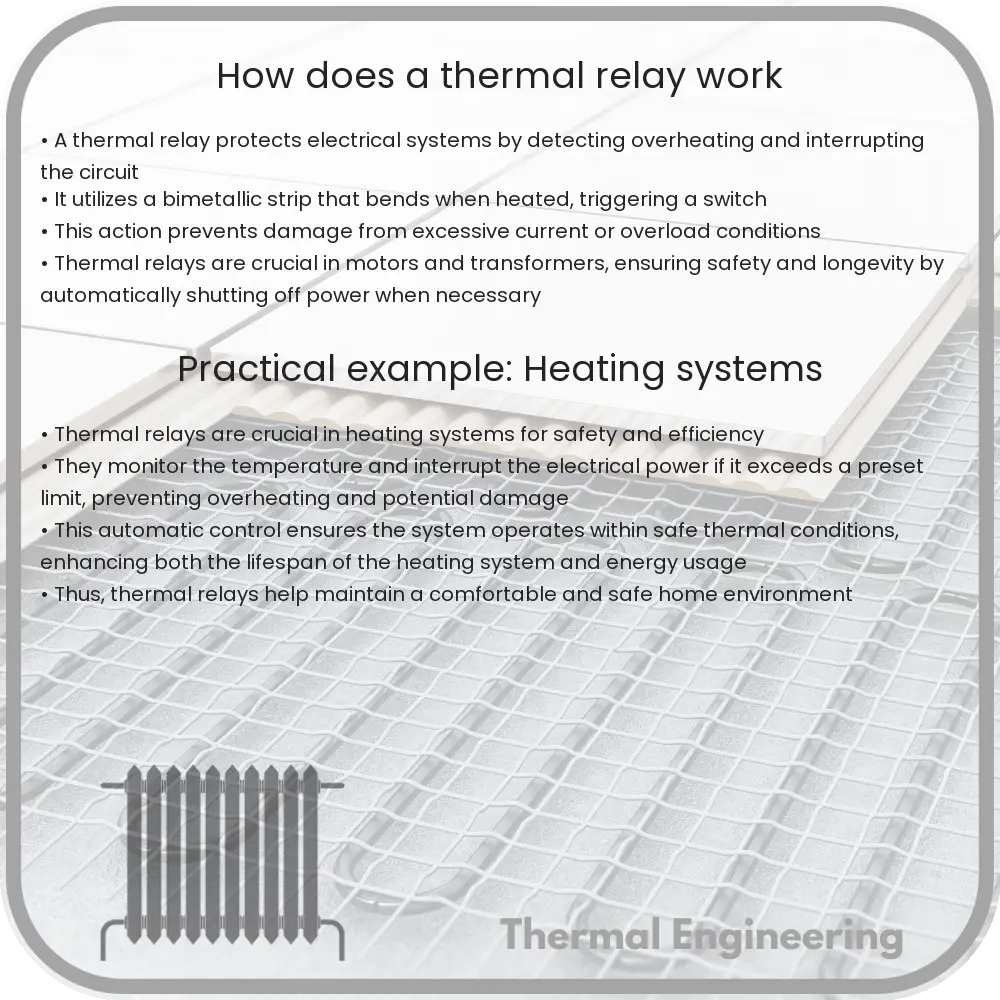Learn how thermal relays function to protect electrical devices from overloads by monitoring and responding to excessive heat due to current flow.

Understanding How a Thermal Relay Works
A thermal relay is an essential component in electrical engineering, designed to protect electric motors and other electrical devices from overloads that might cause damage due to excessive current flow. Also known as a thermal overload relay, it operates on the principle of heat generated by electrical current. This guide explains the functional mechanism, components, and typical applications of thermal relays.
Basic Principle
The basic working principle of a thermal relay is to monitor the heat produced by the current passing through an electrical circuit. Excessive current can lead to overheating, which, in turn, can damage the electrical components. A thermal relay aims to prevent this by breaking the circuit when a predefined temperature or current limit is exceeded.
Key Components
- Bimetallic Strip: This is the core component of a thermal relay. It is made up of two metals with different coefficients of thermal expansion welded together. When heated (due to electrical current), this strip bends due to the different expansion rates of the two metals. This bending motion is used to trigger a switch that opens the circuit, thus stopping the current flow and protecting the equipment.
- Heating Element: A resistive wire that heats up as current passes through it. It is usually placed close to or wrapped around the bimetallic strip, providing the necessary heat to activate the strip.
- Contact System: This includes a set of electrical contacts that open when the bimetallic strip bends sufficiently. When these contacts open, the electrical circuit is broken, stopping the current and consequently, the heat generation.
- Calibration Mechanism: This allows the relay to be set or calibrated for different current levels, adjusting the sensitivity of the bimetallic strip to heat. It is vital for ensuring that the relay functions accurately according to the specific requirements of the circuit or device being protected.
How It Works
When an electrical device or circuit is in operation, current flows through the thermal relay. If the current is within safe limits, nothing happens, and the circuit works as usual. However, if the current exceeds the predefined safe limit, it causes the heating element to generate more heat. This additional heat causes the bimetallic strip to bend. Once the strip bends to a critical point, it mechanically drives the contact system to break the circuit. This interruption stops further current flow, allowing the circuit and the connected device to cool down, thus preventing damage due to overheating.
Applications of Thermal Relays
- Motor Protection: Motors are susceptible to damage from overcurrents due to sudden load changes or mechanical failures. Thermal relays are widely used to protect motors by ensuring that they operate within safe thermal conditions.
- Heating Systems: In systems such as electric heaters, thermal relays prevent overheating by monitoring and controlling the heat output of the elements.
- Industrial Equipment: Various types of industrial machinery that are prone to overheating due to heavy or prolonged use typically incorporate thermal relays for safety.
Conclusion
Thermal relays are indispensable in safeguarding electrical and mechanical equipment from damage due to excessive heat generation caused by current overload. By understanding how a thermal relay works, engineers and technicians can better design, implement, and maintain systems that ensure operational safety and efficiency. Furthermore, understanding this principle empowers users and service personnel to perform troubleshooting and maintenance with greater efficacy.